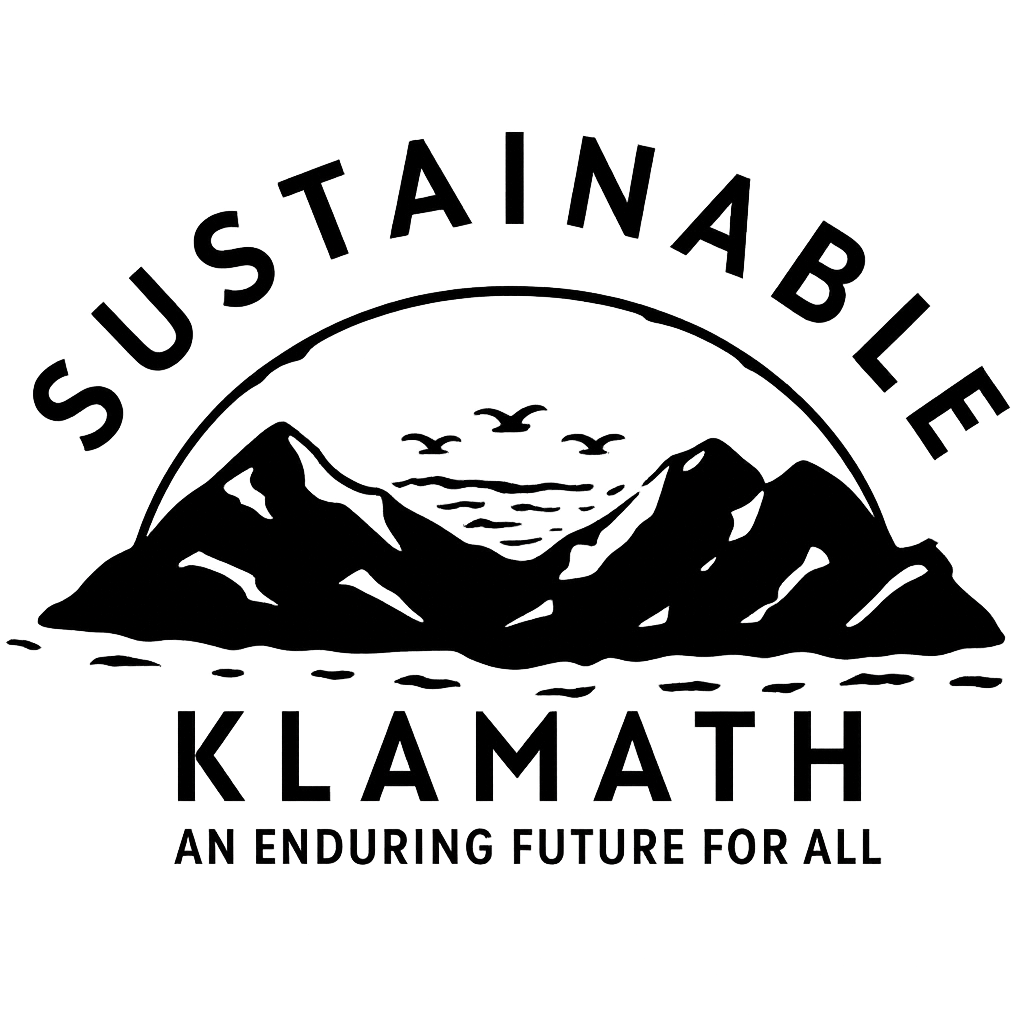by Alissa Oliverson (SWAC Chair) October 2020
Trash Talk Series from Sustainable Klamath, Solid Waste Action Committee (SWAC)
Trashing your jack-o-lantern after Halloween is a horrifying way to worsen climate change and it is a nightmare of wasted opportunity. Pumpkins provide vital nutrients, and they can combat food insecurity as a human food source. And even after they have spooked your neighbors, jack-o-lanterns can continue to scare up beneficial microorganisms in our soil through composting.
Halloween is pumpkin season, but it is not just the wicked grins we carve into millions of jack-o-lanterns that might rightly frighten you. It is a scary fact that in the U.S. more than 1 billion pounds of pumpkins will end up in the trash instead of being eaten or composted. This amount of waste is a terrifying reality that contributes to local and global food insecurity, greenhouse gas emissions, and lost opportunities to regenerate the precious soil that grows our food. So, before you carve your pumpkin this year, give a thought to more ways you can eat it, and how you will care for it after its freaky charm has faded.
The U.S. Department of Agriculture (USDA) defines food insecurity as “a lack of consistent access to enough food for an active, healthy life,” and more than 13 million U.S. households were food insecure within the last year. Imagine the positive change we could make to that number if those 1 billion pounds of trashed pumpkins were used to feed people instead of simply providing menacing glares from festive front porches.
Pumpkins are low in calories but packed with nutrients, like vitamins A and C, which can boost our immune systems. In our current state of uncertainty amidst the global Covid-19 pandemic, common sense tells us we can use all the immune-boosting help we can get. And with its low calorie density, pumpkin is a weight loss-friendly food that can help us avoid packing on health-endangering extra pounds over the notoriously richly plated holiday season. In the spirit of the fall harvest you might also consider a pumpkin pardon. Much like the White House’s turkey pardon at Thanksgiving, you could pardon a pumpkin from its fate as a jack-o-lantern at Halloween. Instead of carving a pumpkin you could donate one to a local homeless shelter, where it could fulfill its destiny as a warm and nutritious soup or other meal for people in need, and avoid a wasted life in a landfill.
When pumpkins creep into landfills, they decompose and emit a greenhouse gas called methane (CH4). Over the course of 20 years, methane is more than 80 times as powerful as carbon dioxide (CO2) in trapping heat in the atmosphere. And though it does not linger in the atmosphere as long as CO2, methane is more devastating initially because it is more effective at absorbing heat from the sun’s rays. The good news is that we can mitigate the effects of methane in our atmosphere by keeping pumpkins and other food waste out of our landfills.
One of the best methods available to us for reducing CO2 levels in our atmosphere is regenerating our soil. Experts have forecast that if we do not prioritize soil regeneration, not only will our climate continue to get warmer, we will also face a terrifying situation in which our soil will be too depleted to grow crops within about 6o years. Methods such as composting and no-till farming are highly effective at pulling CO2 out of the atmosphere and putting it back into the soil, where it needs to be if we are to produce healthy crops for generations to come.
While most of us do not participate in industrial farming that could be transitioned to no-till farming, we all can compost. Decrepit jack-o-lanterns that are added to your compost pile will help microorganisms grow and work their magic, turning food waste into a nutrient-rich treatment that can quickly enhance and heal our rapidly degenerating soil. This will allow us to produce food well past the hauntingly short 60-year timeframe and draw down our atmospheric CO2 levels at breakneck speed. It is comforting to know that something so simple as proper jack-o-lantern after care could be an important part of viable solutions to many of the social and climate problems we are experiencing in our modern times.
It can be challenging to adopt a new mindset and make changes, especially when those changes require us to move away from traditions we have shared with our loved ones. So, if you simply must carve a pumpkin this year, please consider alternative ways to dispose of it when the holiday has passed. You could have a pumpkin smashing party and put all the viscera in your compost bin. If you don’t have a compost bin you can simply bury the pumpkin. Or you can hack that pumpkin to pieces and spread it in a natural area where birds and other wildlife can access it as food. A quick internet search will reveal many ways to care for your jack-o-lantern after it has served its haunting purpose, and by creating a new, eco-friendly family tradition you will be ensuring that your family will be able to enjoy good food and fun times on a healthy planet long into the future. So, do something good for your family and the planet this Halloween. Donate a pumpkin, try a new recipe, and compost your jack-o-lantern when it is withering away on its deathbed. Whether you eat it or smash it, just don’t trash it.
For more information on composting and other solid waste issues, please visit the SWAC page at SustaintableKlamath.org. Happy Halloween!

Leave a Reply